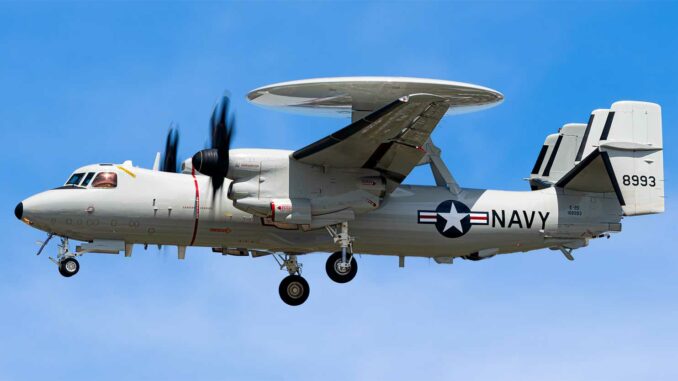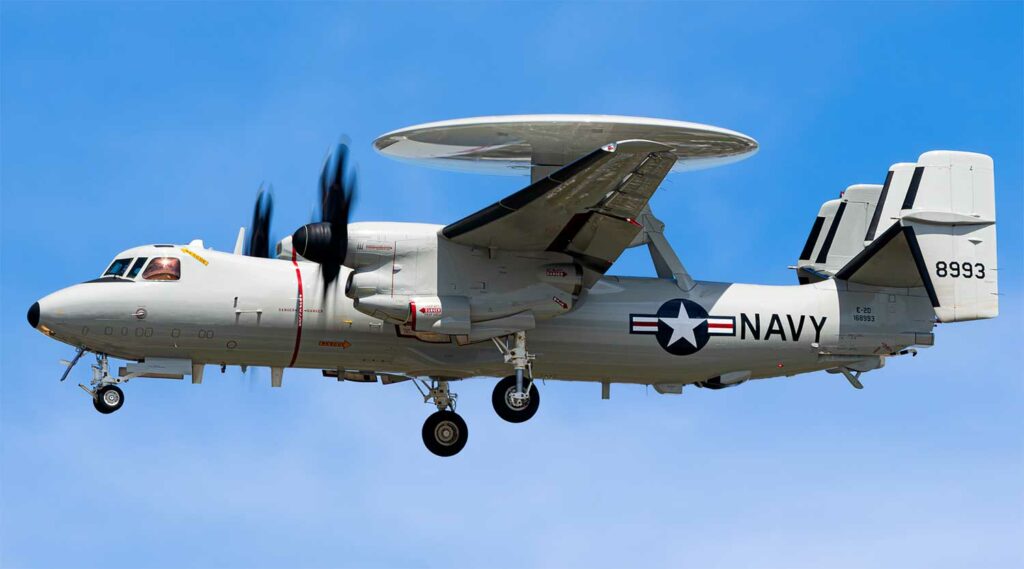
USAF cancels E-7 Wedgetail, opts for more agile E-2D Hawkeye, AEW funding and transition to space-based sensors.
The Pentagon has canceled the E-7 Wedgetail program—26 aircraft initially planned to replace the E-3 Sentry—in favor of the rapid deployment of E-2D Hawkeye aircraft from the Navy, which are less expensive and capable of operating from austere forward bases. Funding of $1.55 billion has been allocated ($150 million for five aircraft, plus $1.4 billion for additional units). Although smaller, the E-2D retains the advanced AN/APY-9 radar, air refueling capability, and integrates with the agile ACE doctrine. This decision reflects the Pentagon’s priority for immediate AEW&C capabilities, with a gradual transition to space-based intelligence systems.
A strategic shift in AEW&C procurement
The US Air Force (USAF) is facing a logistical decline in its fleet of E-3 Sentry aircraft, whose availability is plummeting after more than 50 years of service. The initial choice was the E-7 Wedgetail, derived from the Boeing 737, to replace 26 aircraft between 2027 and 2035. However, the program is experiencing significant cost overruns (+33%), delays in the first mission (first flight postponed to 2027), and concerns about survivability in contested environments.
The Secretary of Defense has described the Wedgetail as “gold plated”, too expensive and too late. The option chosen is to cancel the order and finance the integration of the E-2D in the short term with $1.55 billion from the USAF/USN joint AEW budget. This move marks a tactical shift, favoring immediate availability and existing logistics infrastructure over the deployment of a more modern but delayed fleet.
Technical comparison between the E-7, E-3, and E-2D
The E-7 Wedgetail is an AEW\&C platform with AESA MESA radar, a range of >600 km, a mission cabin for eight operators, and in-flight refueling via a boom, derived from the 737. It was intended to offer a modern, robust, and UN/NATO-interoperable solution.
The E-2D Hawkeye, a smaller turboprop, is designed for aircraft carriers: AN/APY-9 AESA radar, five operators, recent refueling, 7-hour flight endurance. Its lower lift limits its radar and processing capacity, but its tactical agility allows it to be deployed on short, sometimes unpaved runways, which is essential to the Agile Combat Employment doctrine.
Integrated superiority: the E-7 prioritizes radar and processing capabilities, while the E-2D focuses on operational flexibility from austere bases. The USAF has opted for the E-2D, acknowledging that it provides effective and immediately available AEW capabilities, even if this means accepting certain limitations compared to the E-7.

Operational implications
The choice of the E-2D Hawkeye as an interim solution in the AEW&C segment has concrete operational consequences. The most immediate is the rapid availability of this platform, with initial deployment expected as early as 2026. This tight schedule allows the USAF to ensure minimal continuity of airborne surveillance, as the E-3 Sentry fleet becomes difficult to maintain.
Tactically, the E-2D integrates effectively with the Agile Combat Employment (ACE) doctrine. Originally designed for naval aviation, it can operate from advanced, short, and poorly equipped bases where the E-7 Wedgetail—an aircraft derived from the 737—would be unsuitable. This mobility allows for increased responsiveness in isolated areas, particularly in the Arctic and Pacific.
This reorientation also leads to partial pooling of resources between the Navy and the Air Force, which could operate shared logistics chains, reducing support costs. However, it marks a temporary decline in capability in terms of data processing, radar range, and inter-allied coordination compared to the E-7.
At the same time, the Pentagon is continuing to develop airborne space sensors. The E-2D will therefore have to cover the interim period until they enter service, probably in the early 2030s. This transitional period could reveal tactical limitations, particularly over long distances, given the lower cruising altitude and detection range compared to its predecessors.
Finally, integrating the naval system into USAF procedures will require technical adaptation (data links, sensor compatibility, NATO interoperability) and doctrinal changes, with consequences for command and control capabilities in contested environments.
Industrial, budgetary, and strategic challenges
In industrial terms, the cancellation of the E-7 reduces an order for 26 aircraft, representing billions allocated to Boeing’s production lines. This is likely to impact local employment and suppliers. At the same time, the massive investment in the E-2D is a reminder of the rationalization of defense spending.
Strategically, favoring a proven platform sends a clear message: the priority is immediate operational capability in a tense geostrategic context (Chinese/Russian military presence, regular tactical activities in Arctic areas). The E-2D’s ability to operate from forward bases makes it suitable for extended theaters.
In the long term, the integration of AEW satellites demonstrates a transition to space as the future frontier for ISR. However, this infrastructure is still under development in the 2030s. Europe and NATO are following these choices, even though they are maintaining their own AEW & ISR programs.
War Wings Daily is an independant magazine.